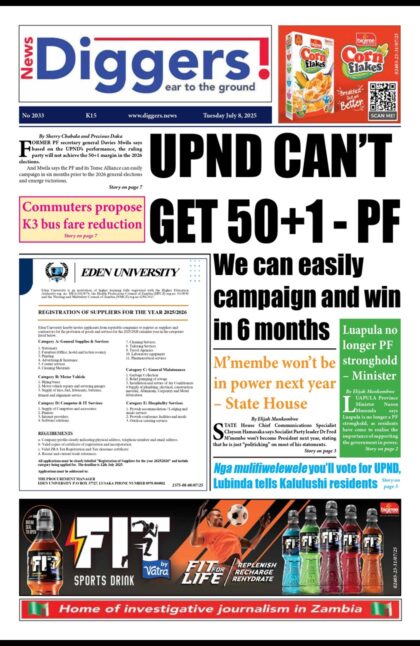The kwacha has depreciated to hit the K14.00 per dollar psychological barrier for the first time in six months, owing to a resumption in high demand for the greenback on the local market.
And financial market analyst Maambo Hamaundu says the local currency’s sudden slide is symptomatic of the huge demand for foreign currency to pay for the country’s emergency electricity imports.
According to financial market players, the kwacha maintained a weak position, depreciating to breach and crash through the K14.00 per dollar mark, surrendering its recent gains where it appreciated to an average K12.80 and K12.90 between late June and July, while maintaining the K13 per dollar range since August, this year.
According to the Bank of Zambia (BoZ), the kwacha traded at an average K13.95 and K14.00 by close of business, Wednesday.
This is the first time the local currency depreciated to hit these levels since mid-May, this year, from trading at K12.87 and K12.92 a fortnight earlier amidst extremely limited dollar supply against heightened demand for the greenback by importers, mainly market players importing fuel, causing the mismatch.
While the kwacha hovered around K13.00 to K13.29 per dollar by October 31, the local currency had resumed a dramatic slide to K13.87 per dollar by close of business, Tuesday, before escalating to breach the K14.00 per dollar psychological mark, Wednesday afternoon.
In its Treasury market update, FNB Zambia noted that the kwacha’s losses had been triggered by negative market sentiment.
“The local unit continued to trade under pressure in yesterday’s trading session, slipping to a high of K13.95. With not much change in fundamentals, some of the losses appear to be pushed by sentiments. We expect the currency to continue to trade on the back foot in today’s (Wednesday’s) session,” stated FNB Zambia.
And Hamaundu observed that the kwacha’s quick depreciation was indicative of the huge dollar demand required to pay for the emergency power imports that had taken effect required to plug Zambia’s widening power deficit.
Last Friday, President Edgar Lungu announced that a US $14 million payment would be paid to Eskom this week as part of the overall outstanding US $34 million balance for the emergency electricity power import deal of around 300 megawatts.
“There isn’t any other major pronouncement, which has put extra pressure on the currency, except for the traditional one, which is debt, which is quite heavy, and our normal imports. So, the only thing that is new in the equation is the aspect of the importation of electricity,” Hamaundu said in an interview in Lusaka, Wednesday.
“…That in itself is showing us how small or fragile our economy is because, really and truly, US $14 million shouldn’t have such an impact on your dollar-kwacha rate to the extent where it moves from rates as low as K13.50 and within a space of five, six, seven days, it goes over K14! It shows you that our economy is fragile.”
He also observed that market speculation of the kwacha remained rife.
“And factors in there also could be an aspect of speculation. So, there could be speculation by the major players, who anticipated that there could be a huge demand (for dollars). But the major points are really around the importation of electricity and the small economy,” said Hamaundu.
Meanwhile, a check at Golden Coin Bureau, Cairo Road branch, revealed that the local unit was trading at K13.83 and K14.10 per dollar for bid and offer, respectively, by close of business, Wednesday.



















